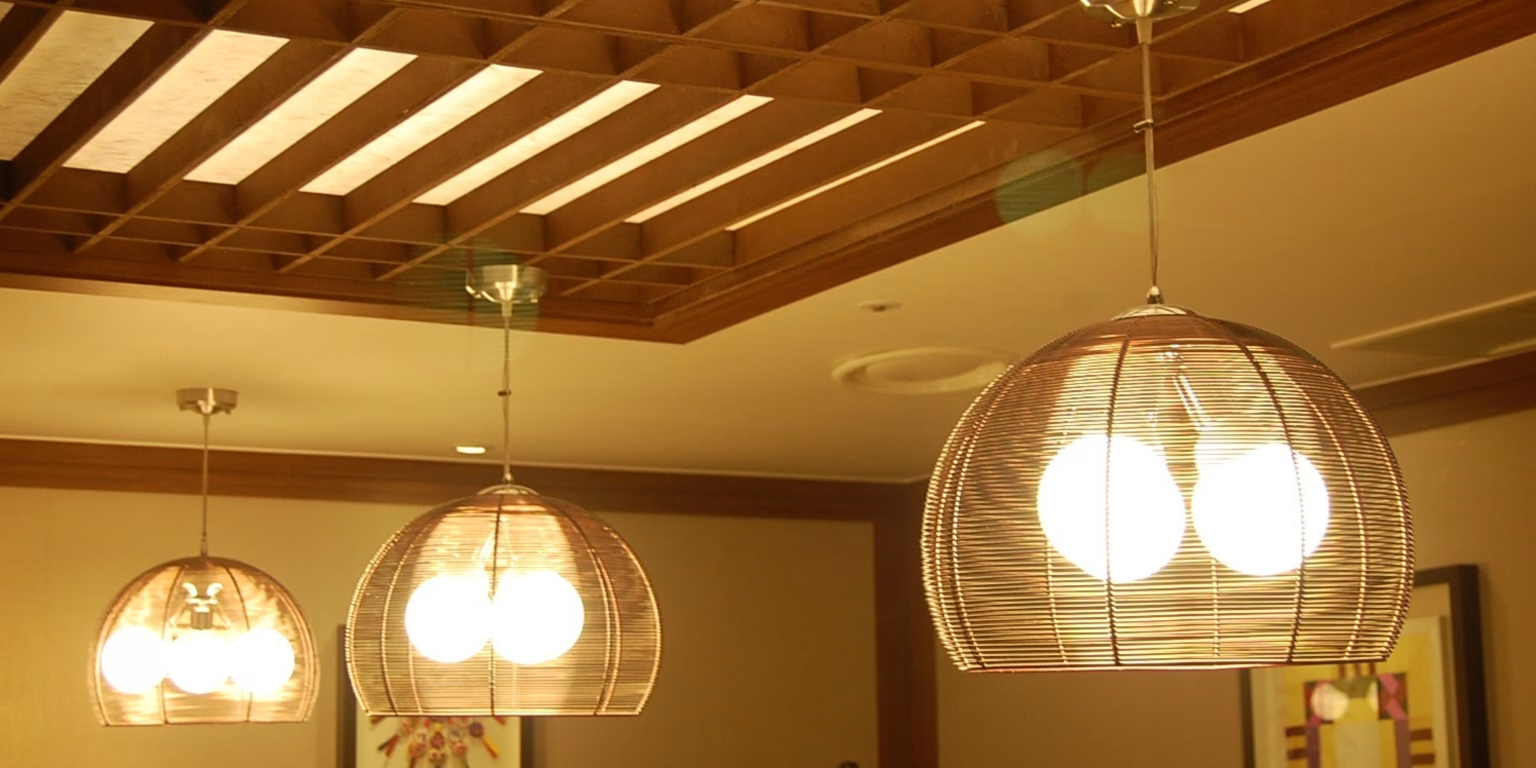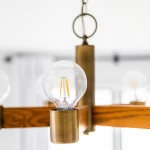Lighting is key in interior design but often overlooked. It can change any space, create mood, and highlight features. The right lighting makes a room feel welcoming or energizing. This article explores the art of lighting and how to pick the best fixtures for your home.
Understanding the Importance of Lighting
Lighting is crucial in home design. It’s important to know why.
1. Creates Ambiance
Lighting sets your home’s mood. Soft lighting makes it cozy, while bright lighting is energizing. The right lighting can make a room feel bigger or more intimate.
2. Enhances Aesthetics
Good lighting highlights your home’s features. It can focus on artwork or unique furniture. This makes your room more appealing.
3. Increases Functionality
Different tasks need different lighting. A bright kitchen is great for cooking, while a dim bedroom helps you sleep. The right fixtures make each space work better.
4. Improves Mood and Well-being
Lighting affects our mood and health. Natural light boosts mood and productivity. But harsh artificial light can stress us out.
Types of Lighting : The Art of Lighting
To master lighting, know the three main types: ambient, task, and accent.
1. Ambient Lighting
Ambient lighting lights up a room. It’s for moving around safely. Sources include:
- Ceiling Fixtures: Chandeliers, flush mounts, and pendant lights.
- Recessed Lighting: These lights are in the ceiling and look clean.
- Natural Light: Windows, skylights, and glass doors add natural light.
2. Task Lighting
Task lighting focuses on specific areas. It’s brighter than ambient lighting. Sources include:
- Desk Lamps: Great for workspaces or study areas.
- Under-Cabinet Lights: Good for kitchen countertops.
- Floor Lamps: Perfect for reading in living rooms.
3. Accent Lighting
Accent lighting adds drama to a room. It highlights features or objects. Sources include:
- Spotlights: Highlight artwork or features.
- Wall Sconces: Create a soft glow on walls.
- Track Lighting: Adjustable for different room points.
Choosing the Right Fixtures
Choosing the right lighting fixtures is key. It affects your home’s look and function. Here are some tips:
1. Consider the Room’s Purpose
Start by figuring out what the room is for. Kitchens need bright, task-focused lighting, while bedrooms are better with soft, warm light. Choose fixtures that fit the room’s use.
- Living Room: Mix ambient and accent lighting. Use floor lamps, table lamps, and wall sconces for layered light.
- Kitchen: Task lighting is key here. Under-cabinet lights and pendant lights over islands keep the space bright and useful.
- Bedroom: Soft, warm lighting is best for a calm feel. Choose bedside lamps and dimmable overhead lights for flexibility.
2. Match Your Style
Your lighting should match your home’s style. Whether you like modern, traditional, rustic, or eclectic, there’s a fixture for you.
- Modern: Choose sleek designs with clean lines and metallic finishes. Geometric pendant lights add a modern touch.
- Traditional: Go for fixtures with classic details, like ornate chandeliers or brass finishes.
- Rustic: Fixtures made from natural materials like wood or wrought iron create a warm, inviting feel.
3. Scale and Proportion
Think about the size of your fixtures compared to the room. Big fixtures can make a statement, but small ones might get lost in big spaces.
- Ceiling Height: In rooms with high ceilings, big chandeliers or multiple pendant lights work well. But in low-ceiling rooms, flush mounts are better.
- Room Size: Make sure fixture sizes match the room. A small table lamp looks out of place in a big living room.
4. Light Bulb Selection
The type of light bulb affects the room’s light quality. Here are some options:
- Incandescent Bulbs: They give warm, soft light but use more energy.
- LED Bulbs: They’re energy-efficient and last long, coming in various colors.
- CFL Bulbs: They’re energy-efficient and last longer than incandescent bulbs.
5. Dimmers and Smart Lighting
Dimmers and smart lighting systems let you control light intensity and color. They add flexibility and comfort to your space.
- Dimmers: They let you adjust brightness, making it easy to set the mood.
- Smart Lighting: Smart bulbs and fixtures can be controlled with phones or voice commands, offering convenience and customization.
Lighting Trends to Consider
Lighting trends change over time. Here are some current trends to think about when picking fixtures for your home:
1. Sustainable Lighting
Sustainability is key in home design now. Look for energy-efficient fixtures and LED bulbs that are good for the environment. Also, consider natural materials for lamps and shades.
2. Layered Lighting
Layering different lighting types adds depth and interest. Mix ambient, task, and accent lighting for a balanced look. Use lights at various heights to enhance your design.
3. Statement Fixtures
Statement lighting fixtures, like big chandeliers or unique pendants, can be room focal points. They can make your space stand out and show off your style.
4. Vintage and Retro Styles
Vintage and retro lighting is back in style. Look for industrial-style pendants, Edison bulbs, and antique-inspired sconces to add charm and character to your home.
5. Mixed Materials
Using different materials like metal, wood, and glass can make your lighting stand out. Mixing finishes brings a unique look and lets you express your style.
Tips for Implementing Lighting in Your Home
- Plan Ahead: Think about what lighting you need in each room before buying anything. Make a sketch of your layout. Consider where you’ll need light for different activities.
- Layer Your Lighting: Use lights at different heights to make your space welcoming. Don’t just rely on overhead lights.
- Highlight Key Features: Accent lighting can make your artwork, architectural details, or decorations pop. It adds depth and personality to your home.
- Use Mirrors: Mirrors can make a room look brighter and bigger. Place them where they reflect light or windows.
- Regular Maintenance: Keep your lights clean and change bulbs when needed. Dust can reduce brightness and harm your fixtures’ look.
Conclusion
Lighting is key to making your home warm and welcoming. Understanding its importance, exploring fixture types, and choosing the right ones can illuminate your space beautifully. This improves both function and beauty.
The art of lighting is more than just light; it sets the mood, enhances your style, and shows who you are. Whether updating one room or your whole home, good lighting choices make your space more beautiful and comfortable.






